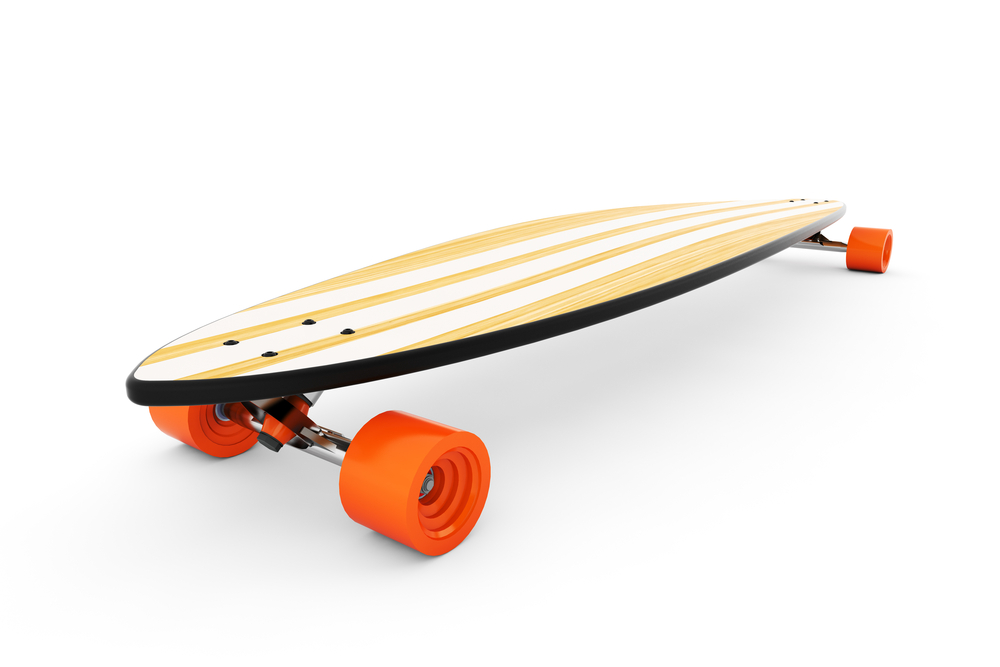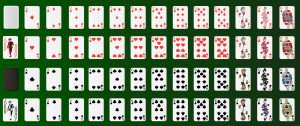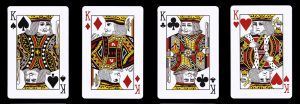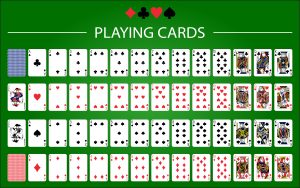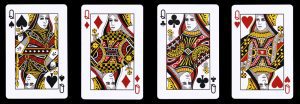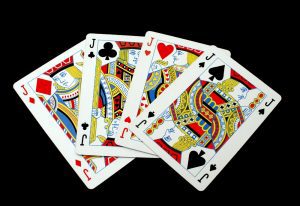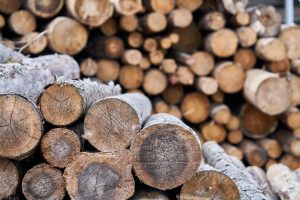In short, yes. Skateboard hardware size matters. But the most ideal hardware size for your skateboard depends on the kind of skateboard you have.
For instance, while the standard hardware length is 1″ for the majority of shortboard applications, 1 1/8″ is the gold standard for cruisers or longboards.
If you decide to add a riser, which expands the space between the skate trucks and the deck, you’ll have to adjust your hardware’s length.
Here’s a rough guideline for hardware size:
- 1 1/2″ hardware – 1/2″ riser
- 1 1/4″ hardware – 1/4″ riser
- 1″ to 1 1/8″ hardware – 1/8″ riser
- 7/8″ to 1″ hardware – no riser
Again, it’s just a general guideline, but it should give you a good idea of what hardware size is best for your skateboard.
Table of Contents
What is a riser?
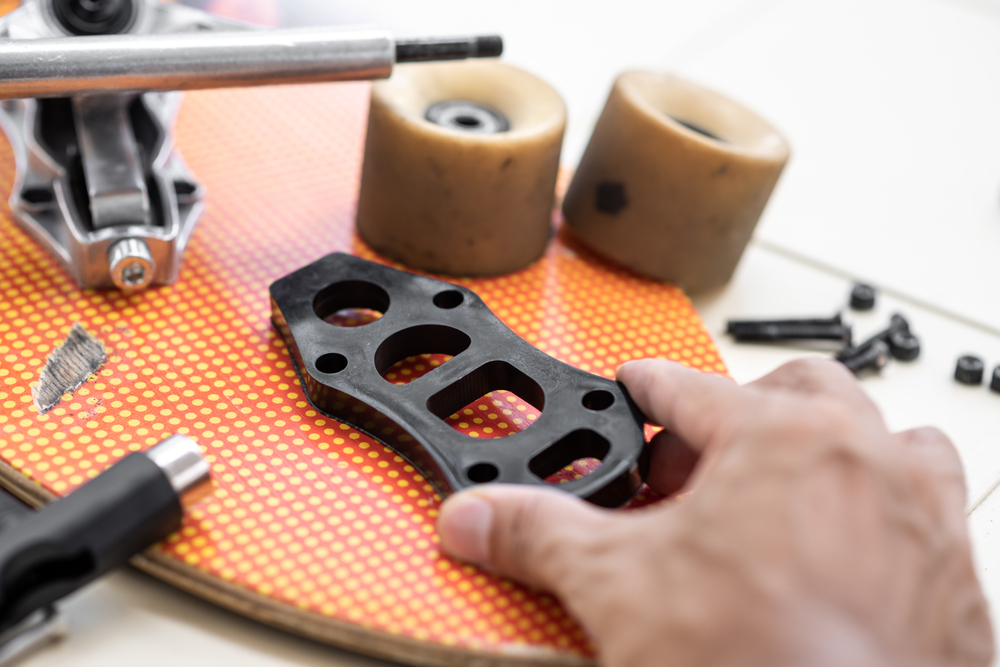
A riser, also known as a riser pad, is a hard plastic pad that’s inserted between the deck and trucks to increase the height of the skateboard.
They’re often included to prevent a situation known as “wheel bite,” which happens when the wheels come in contact with the deck while landing a trick or during a turn (more on wheel bite below).
Standard riser pads vs. angled riser pads
There are two main types of riser pads: standard riser pads and angled riser pads. Standard risers are more common than the latter, and they’re the ones you’ll find on regular skateboards with low-profile trucks or larger wheels.
You’ll typically only see angled riser pads on cruiser boards or longboards since they’re not ideal for street or vert skateboarding.
Positioning and raising your trucks at a fixed angle, angled riser pads are shaped like wedges.
You can use them to angle the trucks toward or away from the middle of the board. If you have a spare cruiser or longboard, you probably should get some angled risers and try out the different combinations of angles and see what works best for you.
If you use these wedge-shaped risers, your turning capabilities will increase, and your longboard and cruiser will become much more dynamic.
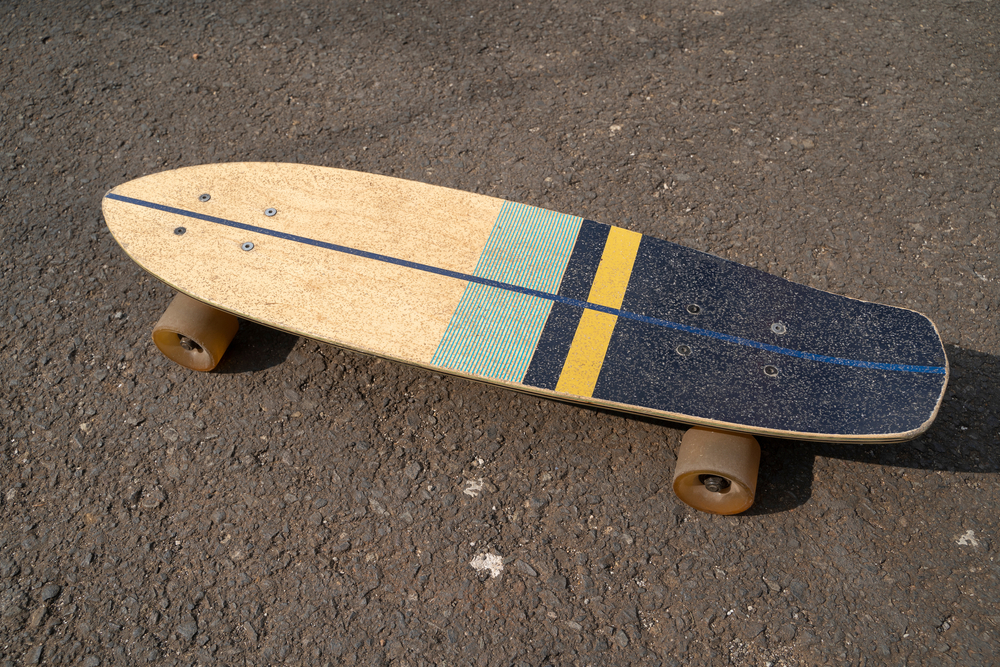
What’s a wheel bite?
A wheel bite occurs when the deck of your skateboard comes in contact with one of your wheels.
Anyone who’s ever gone skateboarding and had their wheels come in contact with the board knows how it feels to experience a wheel bite.
To prevent wheel bites from happening, you want to choose your wheel size carefully. Wheels that are bigger than what’s recommended for a deck can lead to serious damage since they can easily catch on any inconsistencies or imperfections within the length of the board.
Wheel bites are dangerous, and without prevention through proper hardware installation, they can quickly destroy both trucks and decks and even lead to injury.
Depending on your skateboarding style, you can use risers to help preserve your deck and reduce the risk of pressure cracks where the trucks and the board meet.
What type of hardware should I use?
There are a few different styles of hardware, the common ones being Allen or Phillips hardware.
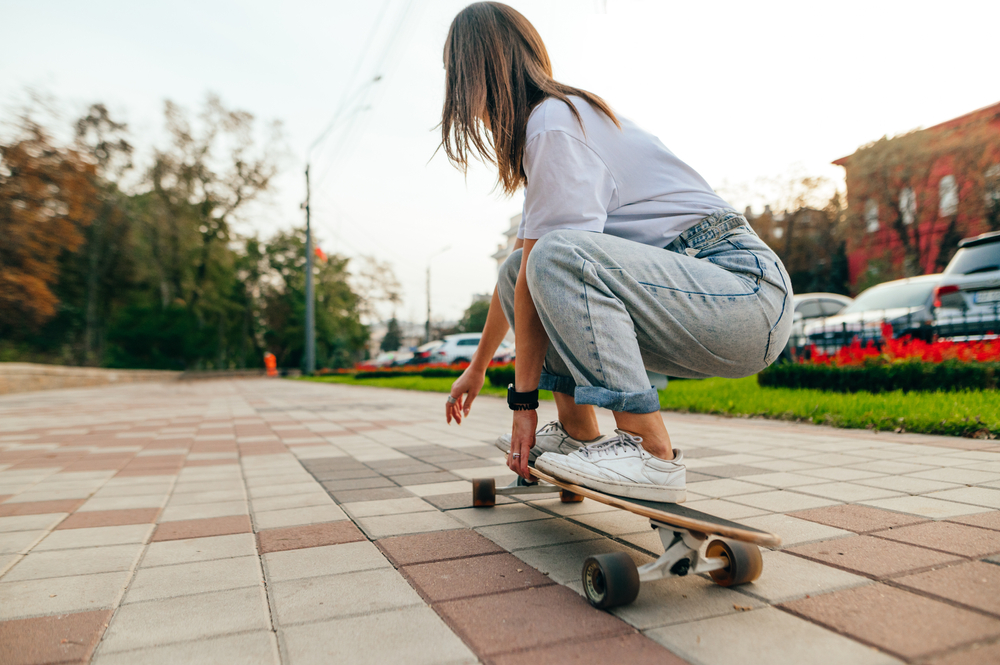
Although their function is exactly the same, the Allen hardware requires a 1/8″ Allen wrench in order to tighten them.
Fortunately, Allen hardware sets usually come with that type of wrench, so there’s no need to buy them separately.
You also have dome-shaped hardware, also known as button head, pan head, or truss head hardware.
This type of hardware should only be used on longboards since you’ll be able to feel the bumps underneath your feet.
They’ll affect your tricks, and if you land with a great deal of impact they could even hurt or injure you.
Because regular bolts from hardware stores are made of weaker metal alloys and are unable to withstand the lateral stresses in skateboarding, they typically don’t work very well.
Allen and Phillips bolts
Bolt packs come in different shapes and sizes. The types of bolts you want to use for your skateboard all come down to your personal preference.
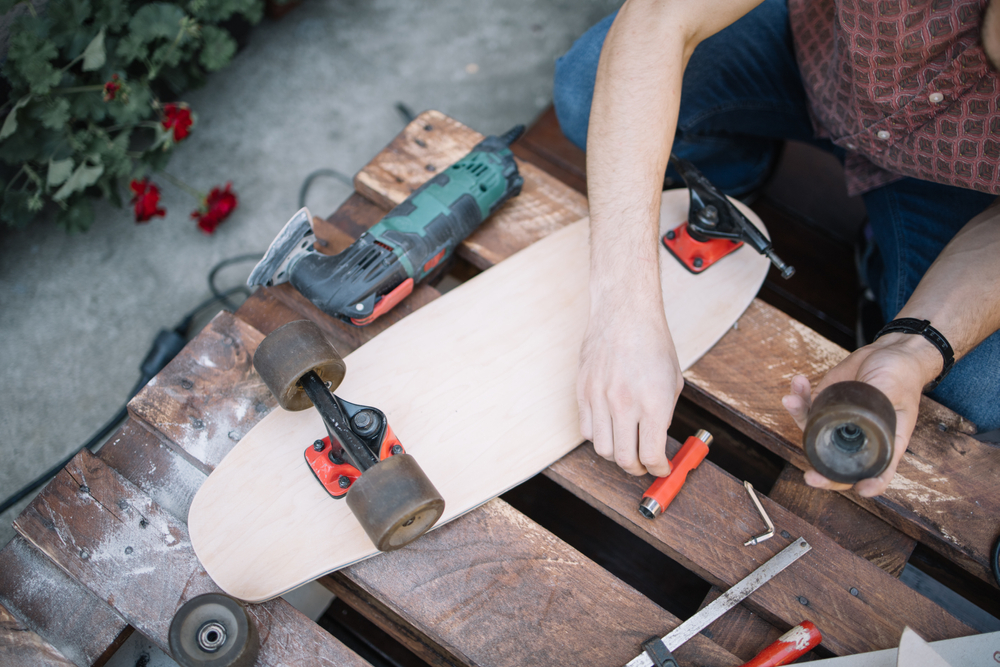
However, Allen (or socket) bolts have grown in popularity over Phillips-head hardware over the years, mostly for aesthetic reasons.
- Allen bolts – These types of bolts have a head with a 6-sided, hexagonal socket. Allen keys, which usually come with Allen-bolt packs, can be found in any skate tool.
- Phillips bolts – These bolts are characterized by their head with a cross-shaped socket. They can be easily tightened with the help of a Phillips screwdriver or the Phillips attachment of a skate tool.
Another thing you need to consider when choosing bolts for your skateboard is whether you need countersunk or raised head bolts.
If this makes this sound even more complicated, the good news is that you only need countersunk bolts to skate.
Counterset bolts are set in the deck in a way that creates a smooth surface and doesn’t interfere with your skating.
For drop-through longboards and certain materials in longboard construction, raised head bolts are usually best.
Installing skateboard hardware
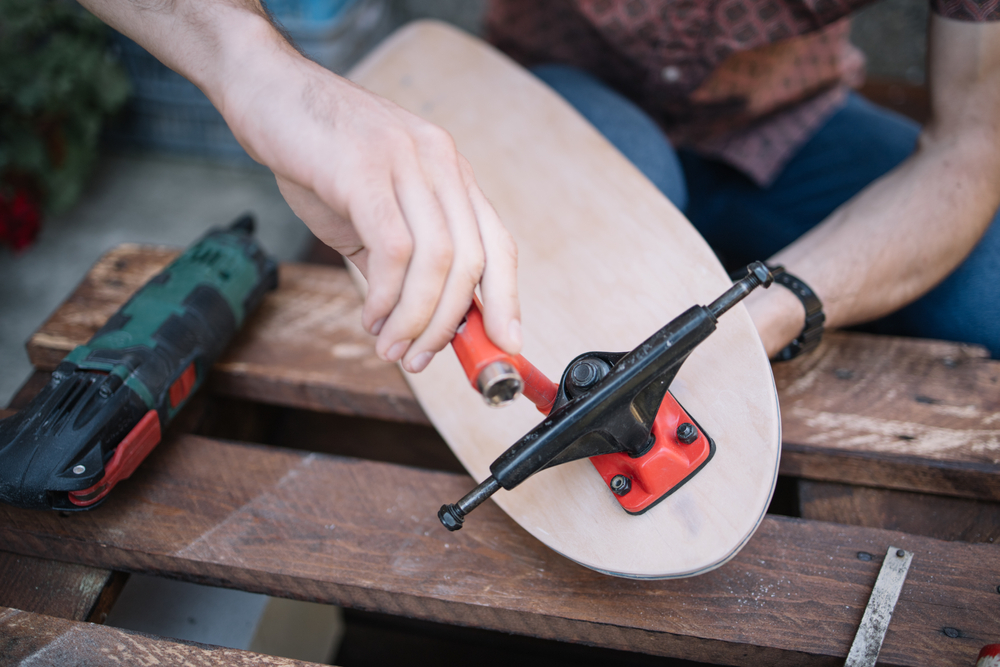
Installing hardware is quite easy and simple if you have the proper tools.
When you’re tightening hardware, you need to do it from both sides using a 3/8″ wrench or socket from the nut side, and your Allen wrench or Phillips screwdriver from the bolt side.
Without a tool on both sides, the hardware will spin in place. But if you have a skate tool, this will be very easy for you to do since you can just hold the bolt in place with one hand while tightening the nut with your other hand.
Just refrain from tightening your hardware too much. You want to tighten them until they’re flush with the top of the deck, but you should avoid counter sinking them to the point where the top of the bolt ends up being below the top of the deck.
Otherwise, pressure cracks might develop on the deck’s underside and might cause the deck to lose some of its pop.
Maintaining skateboard hardware
It’s a fact that hardware breaks eventually, but you might not notice broken hardware until you look and see a missing bolt.

Although it’s normally fine to skate with some missing hardware, it begins to get really unsafe when you’re only skating with two bolts on each truck.
For maximum safety, it’s best to keep four bolts on each truck.
To ensure your hardware lasts a long time, you should keep it tight. After all, the vibrations from riding tend to loosen hardware.
The only thing you can do is tighten your hardware every now and then. If it gets too loose, the trucks might slightly shift from side to side, which can distract and even throw you off balance when you’re trying to perform tricks.
If you notice your hardware suddenly becoming loose or if it becomes mangled, you’re better off just buying new hardware instead of constantly retightening it.
Different variations of skateboarding
Not all skateboarding is the same. In fact, there are many different types of skateboarding, ranging from freestyling to dancing to cruising.

Here are some of the most common variations of skateboarding along with descriptions of them.
- Freestyling – Known as the most common type of street skating, freestyling uses the urban environment (walls, stair sets, curbsides, benches, etc.) and purpose-built parks (rails, ramps, boxes, etc.). Bowl riding, which includes mega ramp riding (see Bob Burnquist and Tony Hawk), happens to be a form of freestyle skateboarding. Flat skating, which also falls under the freestyle category, used to be popular in the 90s but has since decreased in popularity.
- Slalom – First documented in the 60s, slalom is considered the oldest form of skating. Riders, through this form of skating, can showcase their board control and agility while navigating obstacles on road courses. At first, the boards were boxy and short and made of plastic, but today they’re thinner and longer, which reduces drag.
- Cruising – Cruising has enjoyed a massive comeback since the 60s when it first came into being. An old-school form of skateboarding, cruising is a good way to get around and it’s also the most affordable type of deck. Cruising was popularized in Southern California but eventually made its way to many parts of the world, thanks to its lightweight and affordable price, which make it perfect for inner-city use and easy storing.
- Longboarding downhill – Adrenaline junkies who skateboard often do downhill boarding, which usually happens on steep roads with narrow passes and hairpin bends. Although there’s the risk of breaking a fall on harsh tarmac or running into oncoming traffic, accidents are surprisingly rare. That being said, beginning and even intermediate skaters should not try downhill boarding and should only leave it to experienced skaters. The fact that most skaters who try this form of skateboarding are experienced riders is probably the reason for the low accident rate.
- Dancing – A form of skateboarding inspired by longboarding, dancing, also known as sidewalking, requires the use of an elongated skateboard. When “dancing,” riders “dance” up and down the skateboard so they can flaunt their balance. With more flexible and longer boards (which allow for more tricks) becoming available, this variation of skateboarding is steadily growing in popularity.

